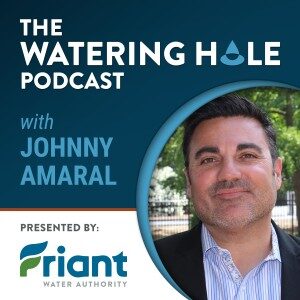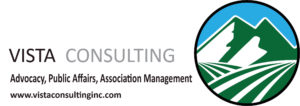 The Westlands Water District held its board of directors meeting on Tuesday, February 15, 2022 at its Fresno headquarters and also on Zoom. The agenda said the meeting was going to start at 1:00pm with a hearing on the proposed water rates, charges and land-based charges. These often are formalities but it is an important function of districts exercising their ability to manage assessing costs on taxpayers while balancing the needs to the constituents and giving the district the ability to set a budget. If the hearing proceeds without any major problems the board will adopt a resolution and the new costs will come into effect at the first of the month.
The Westlands Water District held its board of directors meeting on Tuesday, February 15, 2022 at its Fresno headquarters and also on Zoom. The agenda said the meeting was going to start at 1:00pm with a hearing on the proposed water rates, charges and land-based charges. These often are formalities but it is an important function of districts exercising their ability to manage assessing costs on taxpayers while balancing the needs to the constituents and giving the district the ability to set a budget. If the hearing proceeds without any major problems the board will adopt a resolution and the new costs will come into effect at the first of the month.
Before the meeting commenced there was a wide shot of the boardroom and everyone was wearing masks. Westlands’ boardroom is too small. The district has outgrown the space. If you attend in person and have a laptop with a so/so batteries you have to sit in the back corner. I’ve been on Greyhounds with more legroom. But they are aware of the situation and things may soon change.
The Hearing
Chairman Ryan Ferguson called the meeting to order at 1:00pm and he read the usual boilerplate about comments and such. He moved right into the hearing. All district landowners were notified and the staff gave the first testimony. Bobbie Ormonde, VP of Finance told the hearing to cover the cost of water related matters WWD will collect $11 million for the US Bureau of Reclamation O&M fees. There were many other millions of dollars to be collected and that was all documented. If there is a majority of landowners impacted by these rates protesting the district would have to start all over again. I’ve never heard of that happening but there’s lots of stuff I’ve never heard of. Ormonde said there were no valid protests at this time.
Ferguson asked any landowners who would like to weigh in to speak up. Nataly of the Leadership Council law firm protested saying there is no need to increase M&I users’ rates. General Manager Tom Birmingham said WWD received a letter from the Leadership Council and the NRDC and they will be part of the record. Ormonde said the Leadership letter didn’t address most of the federal rates that impact the fees. Evidently the Leadership Council doesn’t understand there is no mark up on water costs by Westlands, charges are imposed by the Bureau and Westlands can’t do anything about that. Also, the Leadership Council was claiming to speak on behalf of some residents in Cantua Creek but if I understand right WWD actually contracts with Fresno County and therefore those folks aren’t actually direct customers.
The board then found evidence the rates should be adopted and did so in the form of a resolution. The hearing was closed at 1:17pm.
The Meeting
Next Ferguson asked to move some items around and there was a correction of the minutes. Agenda Item 13, 14 and 15, all resolutions dealing with three long-term employees retiring from the district: Gilbert Cano, Wayne Glover and Paul Dunham. Birmingham said Dunham was attending and read the resolution out loud. It was laudatory and as one would expect somewhat moving. Dunham said he has enjoyed working for Westlands. He said he’s made lifelong friends and has had the honor of working with the finest water users anywhere. Good for him. The minutes were approved.
GM’s Report
Birmingham said today would be a little different. He said Dr. Scott Hamilton was present and would make a presentation on the San Joaquin Valley Water Blueprint. Hamilton said there are enormous challenges with water in the Valley, from SGMA to far reaching regulations. He said he doesn’t believe it’s a lack of water, it’s mismanagement of supplies.
and would make a presentation on the San Joaquin Valley Water Blueprint. Hamilton said there are enormous challenges with water in the Valley, from SGMA to far reaching regulations. He said he doesn’t believe it’s a lack of water, it’s mismanagement of supplies.
There are two million acre feet of surface water less than needed being allowed in the Valley. Dr. David Sunding’s economic impact reports shows more than $7billion in annual loses because the lack of water will cause one million acres of farmland to be fallowed.
Former ACWA and Met WD chief Tim Quinn helped form the Collaborative Action Plan. The CAP is made up of five caucuses who have come together to identify and set forth the scope of the problem and solutions. The environment, drinking water, government, agriculture and others have come together to put the C in Collaborative.
Local supplies will not be enough and water will need to be imported from the Delta. Each and every year millions of acre feet flows out of the Delta above and beyond the needs of any regulation. This water needs to be diverted without harming the fish. There is a relatively simple way to do this. Imagine tile drains at the bottom of the water column set in gravel. The fish have a buoyancy to prevent them from being captured. Turlock Irrigation District built a facility that installed these pipes underground and they have been in use successfully.
Hamilton showed an illustration of how this could work in the Delta. This removes the highly inefficient fish salvage program now being used. This can all take place during high flows in the spring. Without infringing on any enviro needs the San Luis Reservoir could start off at one million a/f each year. Extra water above this can go to recharge and other pressing needs.
The next step is to transition into adaptation and figure out how to make this happen. A $3-4 million pilot project needs to be started. He sees support from Westlands, the San Luis Delta Mendota Water Authority and the State Water Project.
Hamilton put up a diagram of the proposed pilot project, something I hadn’t seen yet. Very exciting. However, as he said this is a water project in California and there are no guarantees. Certainly if nothing is done one million acres will come out of production.
Direct Dan Errotabere asked what presentations have made with government folks. Hamilton said there have been meetings and for the most part they have been well received. The current US Fish & Wildlife chief in California Paul Souza is a bit reserved but there is good reason to believe he can be warmed up some. The Bureau and the Delta Science have been noticed. The good news is the pilot program will only require CEQA and will be on private land with private water rights. However, all the agencies will be kept in the loop.
Director William Bourdeau said things have been rough and this pilot project is giving him hope. Director Kevin Assemi asked if this would be in competition with the Delta Tunnel and Hamilton said no it won’t. It doesn’t look like it will be impacted in any way by the tunnel. Jon Reiter asked if there is enough storage south of the Delta to fully utilize these potential supplies and there isn’t at this point. Hamilton did say this could play a big role in keeping the smelt from going extinct.
Water Report
Deputy GM Russ Freeman gave the water report saying about 300,000 a/f has been delivered and there will be twice that pumped before it’s over this year so far, if I understood, the Zoom broadcast locked up and jumbled. That was about two o’clock. IT man Jim Carter was on it like a rash and the lovely Shelly Cartwright assured everyone things will be back to normal soon. Even Birmingham flashed on screen to say much the same.
Freeman continued with the supplemental program saying there is about 9,000 a/f left and all the remaining requests shy 1,000 a/f of late requests should be honored.
Tom Boardman said there is only 1.6 million a/f in storage at Shasta with only 2,500 a/f of inflow per day if I can believe that correctly. He said there is no doubt Shasta will receive a critical year designation this year and the Exchange Contractors will only get 75 percent of its allocation. The snowpack is disappearing quickly due to unusually warm weather in the Folsom watershed, really all over the state it’s been much warmer than average so far this year. Decision 1641 kicked in this month and that reduces exports to send more water out to sea under the D-1641 standards. Oroville is releasing a good amount for the Cooperative Operations Agreement between DWR and the Bureau to pay back the state’s balance. He said the federal share of San Luis should peak in March and then it’s drawdown. For the first time this year I heard a warning about a call on Friant. Birmingham said the Bureau will be making further announcements on the 23rd this month. There will most likely be zero ag allocations and a 15 percent M&I.
Cooperative Operations Agreement between DWR and the Bureau to pay back the state’s balance. He said the federal share of San Luis should peak in March and then it’s drawdown. For the first time this year I heard a warning about a call on Friant. Birmingham said the Bureau will be making further announcements on the 23rd this month. There will most likely be zero ag allocations and a 15 percent M&I.
Gov’t Matters
Cartwright reported a continuing resolution has been passed. Some word out of Washington DC that funding for additional storage in California can be on its way. On the state side there are bills for increasing funding for canals and Sites Reservoir. Elizabeth Jonason gave an update on the district’s outreach efforts. She’s fairly new to this position and doing a good job.
Other Reports
Freeman reported the SLDMWA has been working developing budgets and other matters. The Delta Mendota Canal has some subsidence problems and SLDM will be working on this matter.
Bill Pierce, WWD O&M Manager reported almost half the well meters have been installed. He said the final figure is a moving target as wells go in and out of production.
Bourdeau reported no reportable action took place in the personnel committee’s negotiations.
COO Jose Gutierrez reported WWD is ready to execute a letter of intent to participate in the Sites Reservoir. This wasn’t a commitment to join in on funding the estimated $9 billion project. If I understood this pencils out to about $400 a/f for water yielded. The Sites Project General Manager is ironically named Jerry Brown. Not the old governor. He was on the Zoom call.
Gutierrez said 10,000 a/f of yield will come from 60,000 a/f of storage. There is also a late comers’ buy in fee. There are other costs that continued to mount. In total it could cost WWD $6.5 million to buy in at this point in time. As Gutierrez said this is not cheap water. CVP can’t be stored in Sites but trades can be structured to allow some flexibility to utilize CVP supplies. Today’s request of the board is for a letter of intent which will get WWD in line should it want to move forward.
Sarah Woolf asked if the types of interest of the loans could trigger a 960 acre cap on growers. Birmingham said this isn’t a Bureau project so, no there shouldn’t be any problem. The board voted to send a letter of intent.
Next Freeman presented the board a resolution for a neg dec for the Almond Solar Project. Only Freeman explained it in much greater detail. He did say staff has reviewed this and found WWD could adopt the neg dec and designate the land the project is slated for as farmland. The board adopted.
Next there was a similar presentation by Freeman for the Aquamarine Solar Project. One wonders where that name came from. Is it the color? Is the developer a fan of ocean-scape artwork? I was embarrassed to interrupt the meeting and ask. So we may never know. But the board agreed and adopted this neg dec resolution as well. One more resolution was adopted naming designated and specified parcels in both solar projects as eligible cropland.
The last resolution in this cluster of resolutions was to approve forms of state water project analysis agreement and Warren Act contract for the 2022-2023 groundwater pumping and conveyance project. The board did adopt this. This is going to help stretch the water supply a bit and will entail using federal facilities thus the Warren Act. And there is the Distribution Integration Program to take into account. There was a lot of talk about DIP or Dips and I should have asked earlier what they were talking about.
SGMA
Next Engineer Kitty Campbell said the flying magnet will be soaring over Westlands soon, like March, but the data won’t come back until December at the earliest. This is the towed array that flies behind a helicopter and takes images of what lies below the surface of the earth. It was a short report. Good for her.
The board was asked to adopt a resolution to ratify the rules and regs to support the Westside Subbasin GSA Groundwater Sustainability Plan. Birmingham pointed out there was a letter received that included Ferguson’s signature critical of some of the provisions, if I understood, regarding the allowable transfers. Campbell gave further details, much further. You are advised to read it yourself for these details. That took a while.
Next Andrea Matarazzo, a Sacramento attorney with extra CEQA experience gave a presentation about the three step CEQA process. First, is the proposed action a project? Code gives it a broad definition. Could it cause a change in the environment? That’s board alright. Second, is it exempt? Ministerial or emergency actions could fall under statutory exemption. Categorical exemptions is another way to get past CEQA but there were a lot strings and such to watch out for. If your project isn’t CEQA exempt you got to check the appendix G. It identifies 20 resource categories you may fall in.
Campbell applied these guides to recharge projects in the Westside GSA by examples and discussion. She said Westlands has some duties related to CEQA and it has to exercise these duties. Birmingham said most of the projects by landowners are likely exempt but if it gets a little bigger it could bypass Westlands and go to the county or the Regional Board. He gave as an exaggerated example a 1,000 acre recharge pond as falling under the county and not WWD. So far there have been 22 recharge applications and they all fell under the pilot project that already had a categorical CEQA exemption.
county and not WWD. So far there have been 22 recharge applications and they all fell under the pilot project that already had a categorical CEQA exemption.
Assemi asked if there could be a gap between the pilot program and the “standard” program that can be developed as these rules are adopted. Birmingham said there would need to be notice given and there shouldn’t be any gap. But considering the letter received Birmingham said no one is going to get their feelings hurt if the board wants further refinement and have it brought back.
There was some back and forth between the directors and Ferguson recommended tabling this until next month. It was too late the subject had built up a head of steam and things got quasi heated for brief moment.
Under public comment a grower said the cut off point for determining the “Red Zone”, the time pumping restrictions will be announced be moved, as much economic activity to raise a crop will have already taken place. Reiter agreed saying the grower advisory committee has touched on much of this and if the board and staff would like to meet they’d be willing. Birmingham asked Reiter his opinion if the language from “authorizing” the GM to “directing” the GM to review and provide groundwater credits. This is part of the legalese of will and shall and other such terms.
Finances
Director Stan Nunn said the Finance & Admin Committee met and recommended the board object to the sales by Fresno County tax-defaulted properties. A resolution was prepared to state such. The resolution was passed.
A water wheeling contract between Westlands and Pleasant Valley WD was tabled until this month. If I recall some of the board was of the opinion Westlands wasn’t getting its expenses back. Ormonde gave an example of how such things have been done. The City of Coalinga is given an estimate and that’s trued up later. She and Gutierrez explained how the contract was improved and the board was OK with it. Pleasant Valley isn’t a CVP contractor.
Next the board considered the GM’s budget for the coming year. There is a $24 million credit from the Bureau that can be used against water rates but the district won’t get interest or a fat check for the decades the feds have sat on this money. Birmingham and staff discussed how federal law resulted in a cost allocations study that has been dragging on since the mid-80s. It was supposed to be completed before 1990 but the CVPIA got its nose and nuts in the middle of things and caused delays. Finally some results have been achieved and at least a part of something is happening. Eventually the budget was approved. A couple of budget transfers were also approved.
Westlands is looking at buying property at 286 W. Cromwell in Fresno. There was a budget augmentation of $3 million to buy it. The F&A committee recommended this and the sale of the current building proceeds be applied to this transfer. Assemi, who knows a thing or two about real estate suggested selling the current HQ and leasing it back as a hedge against inflation. That might happen but wasn’t a part of today’s deal.
This was a bit of a disappointment to me. The Cromwell property is the old Provost & Pritchard headquarters and WWD does need new facilities. But I was under the impression WWD was moving to the old P&P offices in Clovis, which is right down the road from me. But it isn’t to be. So headquarters will move.
Next the board approved paying the bills and Ormonde gave the financial reports.
Filling the Void
Westlands has had some rocky times replacing vacant seats. The board is considering a better way. It came as news to me Director Todd Neves is resigning on February 23rd and that will require committee reassignments as well. Birmingham said the board can appoint a replacement or call an election. If the election is opted it won’t take place until November the next regularly scheduled election. If neither happens the county board of supervisors would fill the seat. Gutierrez gave the board some options. A review of the last 20-years shows seven vacancies have taken place due to resignation. Only one seat was filled by election. Bourdeau asked what would happen with an even number of directors if a tie were to take place and the answer is the motion would fail.
The board was asked did it want to appoint a new director or wait for an election. Kristi Robinson asked if there will be an interview process with prior notification should they opt for appointment. Birmingham expects this to happen on the 8th of March. The board approved filling the vacancy by appointment. So here we go.
Neves said a few words and apologized for the timing of his resignation. He said it’s been an honor and he’s grateful for the experience of being a Westlands Director. He had a catch in his voice. He said it is important to recognize, starting with Birmingham how great the staff is. He thanked everyone and received a round of applause. Didn’t find out why he’s quitting. Neves also said having Ferguson at the Chair helped him feel more confident about leaving.
With that Ormonde reminded the board about the upcoming elections for the rest of them who are not resigning. There are schedules to follow. Just about everyone is up for election but Assemi and Bourdeau if I heard correctly.
The next and last item in open session was public comment and no one had anything to say but Luke Dunnington with some solar power company. He thanked the board for their help, said he enjoyed working with Freeman and looks forward to working again. I imagine that’s so. Freeman is easy to work with. He’s smart but doesn’t show it off.
The closed session was next. A performance evaluation on Birmingham and attorney Jon Ruben was on the list of things to do and that was that at 5:13pm. This was an almost brutally long meeting for Westlands, more than four-hours long. That’s long anywhere but WWD usually takes care of many things in committee and it did so today, but there was just a lot to cover. They didn’t waste time but I’m glad I don’t have to sit through closed session with them.
DISCLAIMER OF RESPONSIBILITY; Waterwrights strives to provide clients with the most complete, up-to-date, and accurate information available. Nevertheless, Waterwrights does not serve as a guarantor of the accuracy or completeness of the information provided, and specifically disclaims any and all responsibility for information that is not accurate, up-to-date, or complete. Waterwrights’ clients therefore rely on the accuracy, completeness and timeliness of information from Waterwrights entirely at their own risk. The opinions expressed in this report are those of the author and do not represent any advertisers or third parties.
ALL RIGHTS RESERVED. Copyright 2022 by WaterWrights.net/DAW
Westlands Water District
3130 N. Fresno Street, Fresno CA 93703 Phone:559/224-1523
Board: Ryan Ferguson -President, Frank Coelho Jr. – Vice President, Jim Anderson, William Bourdeau, Kevin Assemi, Ceil Howe III, Daniel Errotabere, Stan Nunn & Todd Neves.
Staff: Tom Birmingham-General Manager, Jon Rubin-Attorney, Jose Gutierrez-COO, Russ Freeman-Deputy GM Resources, , Shelly Cartwright-Associate GM Water Policy/ Public Affairs Representative, Kitty Campbell-Supervisor of Resources, Bobbie Ormonde-VP of Finance & Administrative Affairs
About: Without irrigation, farming in the Westlands area of California would be limited and ineffectual. The history of Westlands is one of continual adaptation, careful water stewardship and advanced technology. By maintaining a fierce commitment to sustainability, the Westlands’ comprehensive water supply system continues to adapt, educate, and surpass conservation goals. Throughout its history, Westlands Water District has demonstrated a lasting dedication to water conservation and recognized that the long-term survival of its farms depends on the effective management of California’s precious water resources. From www.wwd.ca.gov
































